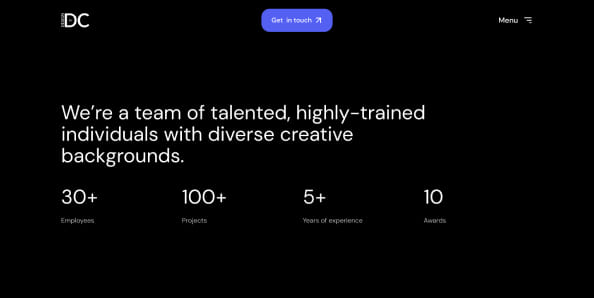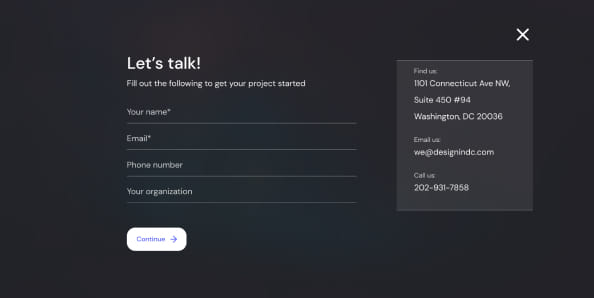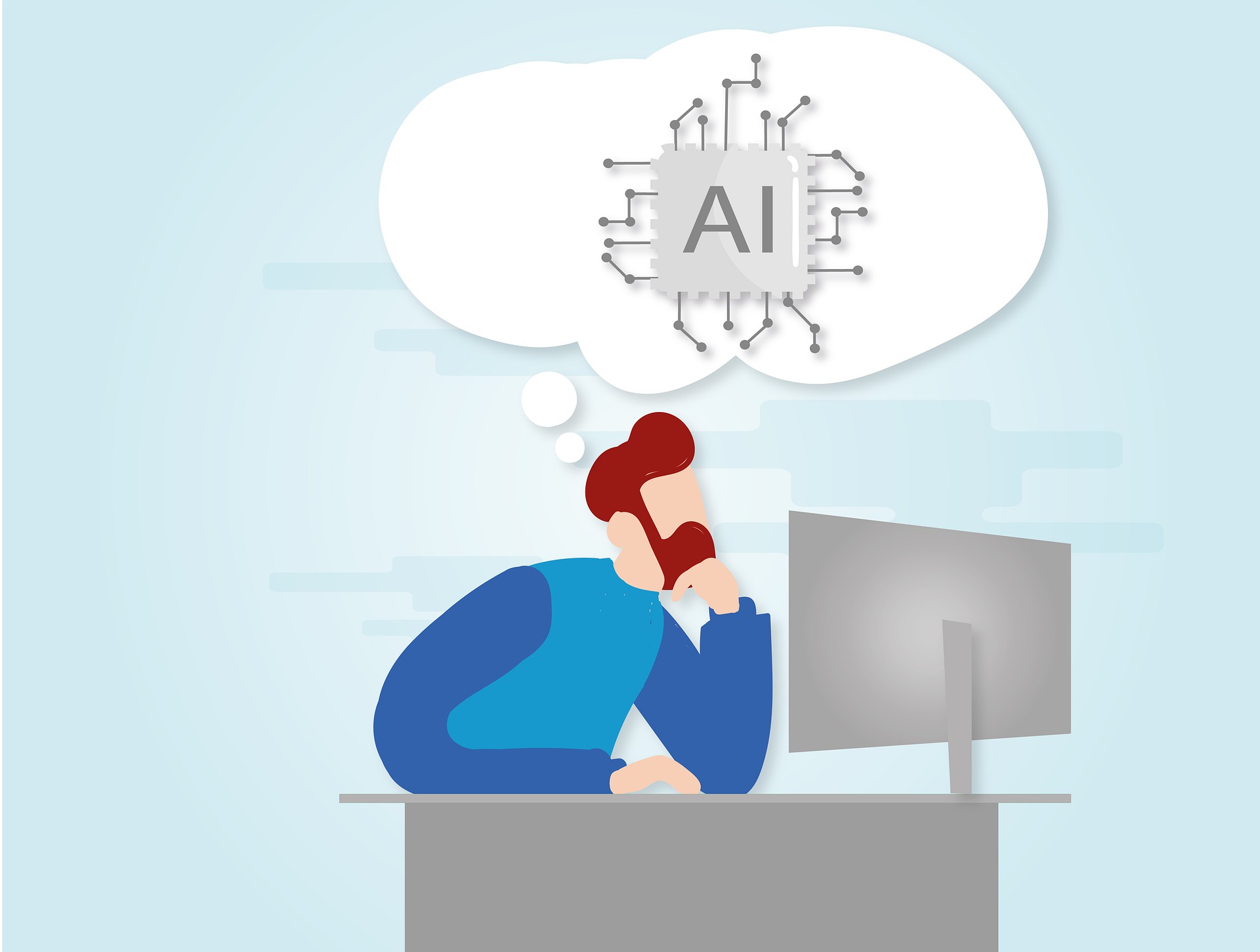The Future of Artificial Intelligence: An Exploration of OpenAI
It’s nothing new—artificial intelligence, otherwise known as AI. We can go all the way back to Alan Turing, a pioneering computer scientist who, in the 1930s and ’40s, conceptualized what he called “intelligent machinery.” But it wasn’t until 1968, with the release of Stanley Kubrick’s 2001: A Space Odyssey, that the public was introduced to the technology. Based on the Arthur C. Clarke novel, the film featured a supercomputer called HAL, which takes control of a spaceship, threatening the lives of all onboard. This was AI run amok, before we knew what AI was. But it was also science fiction.
Only within the last decade or so, as tech has advanced at a supersonic rate, has sci-fi become reality. We at Design in DC know this first-hand. Many of our clients depend heavily on AI’s ever-evolving capabilities, whether they’re upgrading customer service or developing cybersecurity tools. But in the past several months, with an outfit called OpenAI leading the way, AI has shifted into hyperspace. And it’s mostly because of a tool now available for public consumption: ChatGPT.
Some, thinking of how it might improve our lives, call it revolutionary. Others fear it’s a real-life HAL. We believe it’s a bit more complicated, and that by taking a close look at OpenAI, its mission and the technology it continues to develop, we can help paint a full picture.
What is OpenAI?
Based in San Francisco, OpenAI is a tech lab launched as a nonprofit in 2015 to build “artificial general intelligence” (AGI), or software that mimics humans’ learning patterns. With a mission to ensure that for-profit companies don’t monopolize the technology and its benefits, OpenAI promised to make its products open-source, thus benefiting everyone.
But the technology on which AGI is based costs money to develop. Lots of it. So aside from acquiring $1 billion in pledges from donors early on, OpenAI shifted to for-profit status in 2019, with backing from investors. One was Microsoft, which provided another $1 billion in funding and agreed to license and commercialize some of OpenAI’s technology.
AI, we should point out, is rooted in machine learning, or ML. As another DDC blog post notes, ML, at its core, is pattern recognition. ML software is designed to work like the human brain. We learn via pattern recognition, then make decisions based on those patterns.
Over the past few years, OpenAI has developed the technology by leaps and bounds, with various iterations of a chatbot technology called Generative Pre-training Transformer, or GPT. It’s an ML language model which, drawing on huge datasets of content, generates human-like responses. GPT’s neural networks teach themselves to spot and interpret patterns, which means they’re learning all the time. The more data and computing power they’re fed, the more capable GPT becomes.
By 2020, backed by major advances in neural-network design, tech companies were kicking the AI boom into high gear, some even releasing their own versions of chatbot tech. But early missteps, including reports of offensive content, prevented them from sharing with the public. In beta-testing its products, however, OpenAI was transparent about the glitches it was experiencing and released various iterations of GPT as well another product, DALL-E, which generates digital images from language descriptions.
Skip to 2022, and OpenAI was ready to share DALL-E 2 with the world that July and, in November, ChatGPT, the third iteration of its tool. By January, the latter had more than 1 million users and was making headlines.
What people didn’t realize before ChatGPT’s arrival was just how powerful the technology had become, flaws and all.
What is ChatGPT Capable Of?
Experiments over the past several months show that ChatGPT is capable of quite a bit. In January, it passed the U.S. Medical Licensing Exam. And if you need a diet plan to fit with your lifestyle—say you’re big on Italian food, but want to go gluten-free—it has your back.
We tested ChatGPT ourselves, by asking it to write an article on both the advantages and disadvantages of ChatGPT. It took about a minute for it to produce a 450-word article listing the following advantages, condensed for length:
- ChatGPT is available 24/7, enabling users to get questions answered anytime.
- It uses algorithms to understand the context of user questions, enabling it to provide quick and accurate answers.
- ChatGPT provides responses in multiple languages.
- It provides responses without any human bias, meaning users can expect unbiased and objective answers to their questions.
- It’s highly scalable, able to handle a large volume of queries simultaneously without lag or delay.
The “human bias” answer—we’ll address that in the next section. But it’s apparent from all the testing that ChatGPT has potential applications across various industries, including education, marketing and financial and customer services. It also integrates with other chat platforms, including Slack and Facebook Messenger, and can handle a wide range of tasks, like generating reports and online and social media content.
In fact, we asked ChatGPT to write a tweet promoting the film 2001: A Space Odyssey. After a few seconds, it came up with this: “Experience the epic journey of mankind’s evolution in space with 2001: A Space Odyssey. A timeless masterpiece that continues to inspire and awe audiences with its stunning visuals and thought-provoking themes. Don’t miss out on this cinematic masterpiece! 🚀🌌 #2001ASpaceOdyssey #ScienceFiction #FilmClassic”
But there are challenges, as news reports of prematurely released chatbots providing users with inappropriate answers have shown. Even ChatGPT, in answering our “advantages and disadvantages” question, admitted to at least one big flaw—a lack of “emotional intelligence.”
What, Exactly, Should We Be Worried About?
“Worry” is, perhaps, too strong a word. “Vigilance” is better. And it’s ongoing.
OpenAI is transparent about the challenges associated with GPT. In a recent blog post, it addresses concerns about the tech’s behaviors, comparing its development to training a dog. Pre-training comes first, with the model learning from exposure to online content and “a vast array of perspectives.” But during the second phase, OpenAI “fine-tunes” its model’s behavior, mostly by receiving feedback from “human reviewers” adhering to OpenAI’s guidelines. The guidelines for bias, for example, include ways to deal with topics like harassment and violence.
But the process is ongoing. “[W]e are investing in research and engineering to reduce both glaring and subtle biases in how ChatGPT responds to different inputs,” the blog post states. “In some cases, ChatGPT currently refuses outputs that it shouldn’t, and in some cases, it doesn’t refuse when it should. We believe that improvement in both respects is possible.”
OpenAI, of course, is just one company developing chatbot tech. As news articles emphasize, ChatGPT’s success has sparked an “arms race,” with tech companies scrambling to share the technologies they’ve been developing. One big fear is that, as this race revs up, they’ll focus more on rolling out money-making products than on developing safeguards against potential dangers.
Among the dangers is the risk of data breaches, seeing as chatbot tech relies heavily on collecting and storing massive amounts of data. And in the wrong hands, chatbots could be used maliciously—to generate spam or spread misinformation, for example. So anyone making use of the tech must ensure that it aligns with an organization’s values and goals.
Fortunately, OpenAI is focused on these challenges, as well as on what GPT promises for the future.
What’s Next for AI and Chatbot Tech?
The good news, when it comes to AI, is, the possibilities are endless. Initial experiments show that, down the road, ChatGPT and similar products will be able to perform menial tasks and help already-imaginative people with ideation, creativity and planning.
And, yes, we did ask ChatGPT to put together a list of how it may be used in the future. It echoes what news and analysis articles have been saying. So here it is, condensed for length:
- ChatGPT can be used to create more advanced conversational interfaces, such as chatbots, virtual assistants and customer service chatbots. These interfaces can be used in a variety of industries, such as healthcare, finance and e-commerce.
- Its ML algorithms can be used to analyze large amounts of data, including user preferences and behavior, to personalize content and experiences.
- It can be used to create more accurate language translation tools.
- It can be used to create more advanced educational tools, such as virtual tutors and personalized learning programs.
What Did We Learn?
Focused, from the get-go, on ensuring that AI is used to help, not harm, humanity, OpenAI has developed truly cutting-edge products, like DALL-E 2 and ChatGPT, with the potential to revolutionize business and creativity. But because development is expensive, it has necessitated the involvement of Big Tech as well. And that worries some—moving too fast without installing safeguards.
OpenAI, voicing the same concerns, is working diligently to improve upon an imperfect technology. It is, therefore, up to all of us to help guide the development of AI in future months and years so that, worst case, HAL doesn’t take over the spaceship.
Speaking of putting humans first, we invite you to check out Design In DC’s The Human Future Journal, which covers tech with our own best interests in mind. We also invite you to visit our blog page, which is brimming with information on business, web-creation, timely topics and creativity.
And please don’t forget to follow us on social media, to stay up-to-date on Design In DC news.












